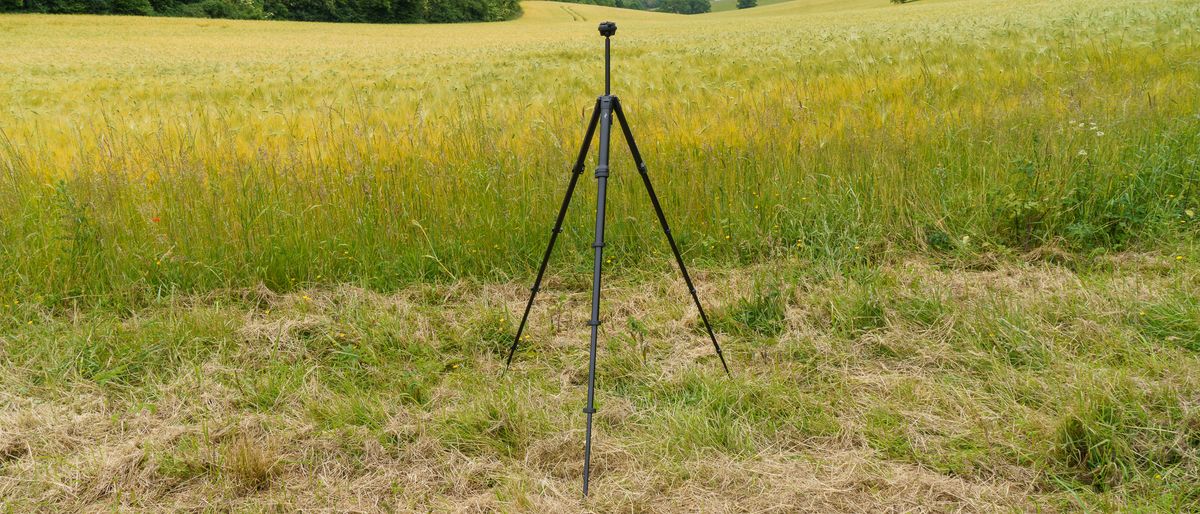Digital Camera World Verdict
The Peak Design Travel Tripod is a tripod you won't mind carrying just in case you need it. It takes a little while to get used to the unconventional head design, but overall it works well, and it's capable of holding a heavy load still in a breeze. We love the carbon fibre version, but the aluminum one is only a little heavier and saves a heap of money.
Pros
- +
Extremely compact
- +
Stable for its size and weight
- +
Fast to deploy
Cons
- -
High price
- -
Centre column must be raised to allow head movement
- -
Supplied tool is easily lost
Why you can trust Digital Camera World
Peak Design make two versions of the Travel Tripod, one made from carbon fibre (£599/$649.95) and the other, reviewed here, from aluminum. Aside from the pattern of the carbon fibre weave, the two tripods look identical and have the same maximum and minimum heights, but at 1.56kg, the aluminum version is 290g heavier than the carbon fibre version (see our separate review of the Peak Design Travel Tripod Carbon Fiber).
The Travel Tripod has 5-section legs that enable it to pack down to 39.1cm, but its narrow diameter of less than 8cm is what really impresses. Rather than round, the leg tubes are shaped to fit closely together around the centre column to reduce the packed diameter.
With the legs fully extended and the centre column at its longest point, the tripod is 152.4cm high. Dropping the centre column but keeping the legs at full length gives a height of 130.2cm. At the other end of the scale, the main section of the centre column can be removed to reduce the height to 14cm, or the column can be reversed for super-low shooting.
Peak Design has used a very unusual design for the tripod's head as the ball is visible at the top of the centre column beneath the pivoting top section with the release plate clamp. When the tripod is collapsed fully, the ball is surrounded by the top of the legs and the three struts that mount the clamp onto it slot neatly between the legs. This means that the centre column must be extended a little before the head can be moved.
Peak design supplies the tripod with a dual hex key tool and a stretchy bag. Also, if you remove the hook at the bottom of the centre column, you'll find a phone holder that can take the place of the Arca-Swiss quick release plate in the clamp.
Specifications
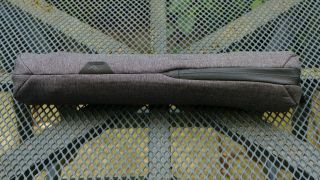
Material: Aluminum
Folded length: 39.1cm
Maximum height: 152.4cm
No. leg sections: 5
Weight: 1.56Kg
Maximum load: 9.1Kg
Build and handling
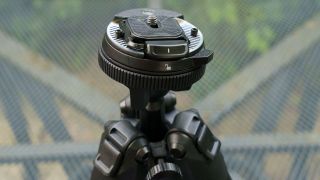
Because of the unusual shape of the legs and the novel head design, the Peak Design Travel Tripod looks quite different from other tripods, but it feels great, and the aluminum legs are robust.
The legs have clip locks, and it's easy to flip open all four locks on a leg with one movement. This, plus the fact that the legs don't flip over the head and centre column for storage, means the tripod can be ready for use in a matter of seconds.
The centre column is locked and unlocked using the small knob between the tops of two of the legs. Once the column has been extended a little, the tripod head can be angled for shooting. A knurled ring above the head ball locks and unlocks the head's movement, and just above it there's a lock for the quick release plate.
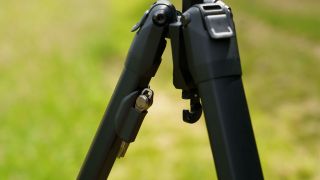
Peak Design has used the same Arca-Swiss compatible quick release plate as it uses for its clips. This requires a hex key to mount it on a camera, and the supplied tool comes in handy. However, this tool slips quite easily out of its plastic holder on one of the legs, especially if the tripod is inverted for any reason.
Many backpacks have a side pocket for carrying a water bottle, and the Peak Design Travel Tripod slips neatly in. Alternatively, there are mounting points on the tripod and its bag for Peak Design's Anchor Loops for attaching one of the company's straps.
Performance
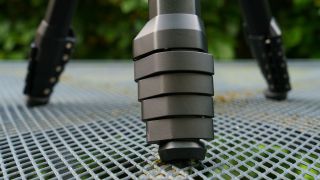
Peak Design spent four years developing the Travel tripod, and it was clearly time very well spent because it's an excellent tripod. It can bear a maximum payload of 9.1Kg, and I've captured sharp long-exposure images using it to support a full-frame mirrorless camera with a 70-200mm f/2.8 lens. It's even delivered sharp long-exposure results with a medium format camera.
The only weak point I've encountered is the quick release plate mount on the camera. If the camera is in landscape orientation, it's fine, but if the camera or lens is very heavy and you're shooting in portrait orientation, it's hard to tighten the plate on sufficiently to avoid it slipping.
In terms of performance, it's difficult to discern a difference between the aluminum and carbon fibre versions of the tripod. However, even when the tripod is added to a backpack full of camera gear, it is possible to tell the difference in weight between the two models.
Verdict
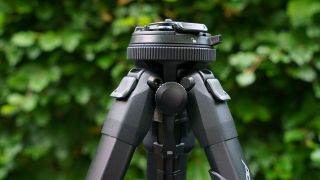
With around $270 difference in price between the carbon fiber and aluminum versions of the Peak Design Travel tripod, the aluminum tripod makes a desirable alternative to its more expensive sibling. The difference in weight, 290g, is noticeable, but it's only about the same as a bottle of water. If you're going to walk long distances, then the carbon fiber version may be more attractive, but many photographers will be happy to accept the extra weight for the cost-saving.
Whichever model you opt for, the Peak design Travel Tripod is an impressively well-designed and well-made tripod. It's small and light enough to be taken on most photographic expeditions, and it's ready for use in seconds.
Angela has been testing camera gear from all the major manufacturers since January 2004 and has been Amateur Photographer’s Technical Editor and Head of Testing for Future Publishing’s photography portfolio (Digital Camera Magazine, PhotoPlus: The Canon Magazine, N-Photo, Practical Photoshop, Photography Week and Professional Photography magazines, as well as the Digital Camera World and TechRadar websites). She is the founder of SheClicks - a community group that encourages and supports female photographers.
